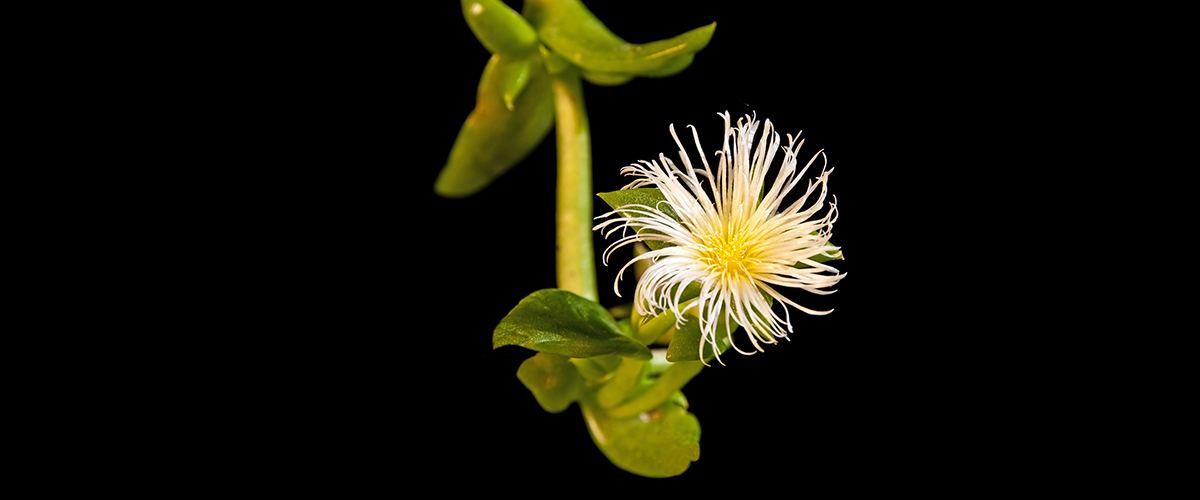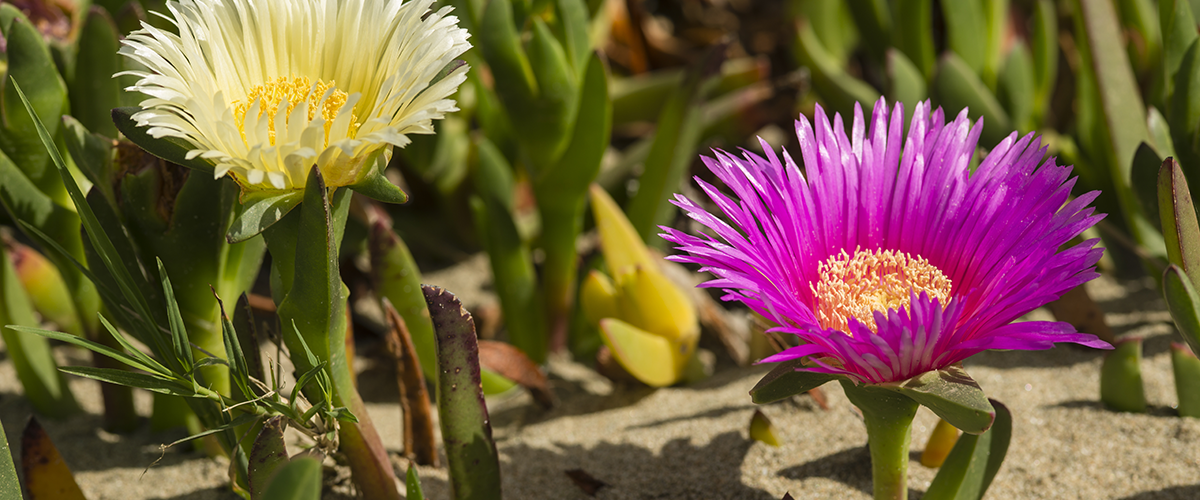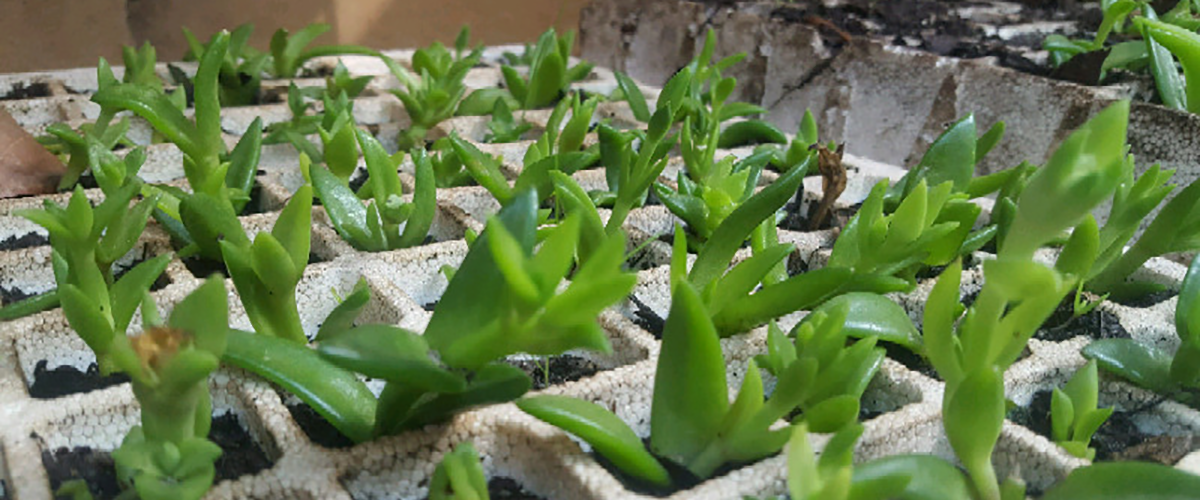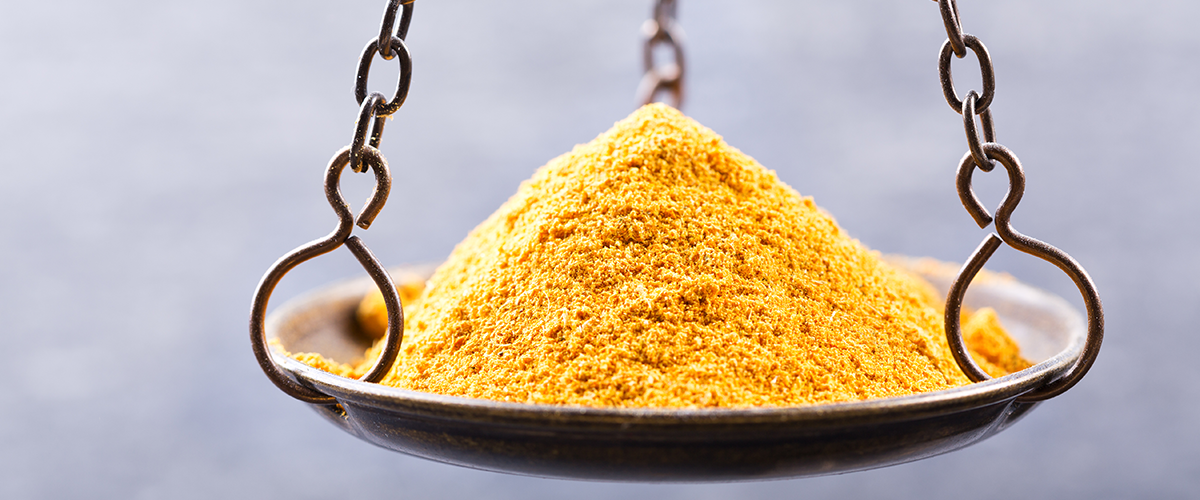
Kanna (Sceletium tortuosum), also spelled canna and channa, and known by its Dutch colloquial name kougoed, is a succulent plant with an ancient history of traditional recreational and medicinal use by indigenous communities inhabiting southern Africa.
This severely underrated and globally legal plant has a wide array of psychoactive and bodily effects. It is a powerful anxiolytic, antidepressant, and overall mood booster, gifting users with energy, euphoria, and increased appreciation for sensory stimulation. Kanna is not a potent hallucinogen, although its ritual use by the Khoikhoi and San indigenous groups suggests it may serve as a visionary tool in the proper context or when mixed with other plant ingredients.
For centuries after its discovery, Kanna was not well-known to the Western world. However, with science identifying its chemical properties over the last few decades and an increasing number of users reporting its therapeutic benefits, this plant is becoming sought after due to its potential to relieve pain, anxiety, and depression in a more natural and less harmful way than conventional pharmaceuticals.

Kannais a somewhat chaotic-looking shrub, growing close to the ground in all directions. Its mess of thin stalks and stocky leaves is interspersed with wispy flowers of white, yellow, or pale pink color. The plant also produces dark yellow or orange pod-like fruits, which are full of brown or black kidney-shaped seeds.
The name of the genus, Sceletium, was given on account of the plants’ leaves showing distinctly skeletal patterns of lignified veins when they wither or dry.

Kanna and other Sceletium species grow natively in the semi-desert areas of Little Karoo and Namaqualand in South Africa, homes to nomadic groups of Khoi and San.

Kanna is easy to grow and tolerant of a wide range of conditions; it can thrive in any environment which receives good sunlight, is predominantly dry, and is not freezing (above 16ºC or 60ºF).
Seeds are sprouted in the same way as any common cacti, and mature plants root easily from cuttings. The plants should be watered sparingly, and the soil should be kept more dry than wet. Any general-purpose compost with some added grit to help drainage should work well to boost its growth.
Populations of Sceletium species, and especially Kanna, are dwindling in the wild, likely due to overharvesting. It is therefore recommended to any psychonaut with a green thumb to grow this easy sprouter and help keep its use sustainable.

Kanna belongs to the Sceletium genus, which consists of about two dozen commercially valuable plant species. These plants have likely been part of indigenous cultures for thousands of years, but the first written records of their use date back to the late 17th century.
The Khoi, as well as the San, seem to have named Kanna after the giant eland antelope, which was symbolically linked to fertility, marriage, rainmaking, divination, dancing, trance, and healing. This majestic animal is held sacred in their cultures and is one of the most frequent motifs found on ancient rock art in southern Africa.
Once they arrived, the Dutch colonists reported of one of the Sceletium species that “This plant is found with the Namaquas and then only on some of their mountains. It is gathered in October and is called Canna. It is held by them and surrounding tribes in as great esteem as the betel or areca with the Indians. They chew its stem as well as its roots, mostly all day, and become intoxicated by it so that on account of this effect and its fragrance and hearty taste one can judge and expect some profit from its cultivation.”
Kanna soon became known as kougoed, which can literally be translated as ‘a thing to chew on.’ This colloquial name was initially given to the oral preparation of the plant, made by drying and ‘fermenting’ it, but it eventually entered even the local vernacular as an expression referring to the plant itself.
In the 18th century, a piece of land in the semi-desert area of the Little Karoo in the Western Cape actually received the name ‘Cannaland,’ reflecting what a fertile environment it was for the growth of Sceletium shrubs. Home to the Attaqua Khoikhoi, it was identified by the Dutch as the source of Kanna supply for the region, one that gave rise to a class of powerful traders dealing in this valuable plant.
The Khoi would gather the plant and exchange it with other, sometimes quite distant, communities for cattle and other commodities. Kanna was well-known throughout the region for its many properties; small doses would be chewed throughout the day by workers to boost energy and stave off hunger and thirst, and larger amounts would be chewed, smoked, used as a tincture, or brewed in a tea on other occasions for enjoying its relaxing, narcotic effects.
Kanna was also widely used as an analgesic and sedative; chewing it would help relieve toothache and abdominal pain, and it also served to numb the jaws before pulling teeth. In its fresh, weaker form, Kanna would be given to children as a mild tranquilizer; a drop or two of its juice would suffice to calm a teething baby or put crying offspring to sleep for a few hours.
However, overall, the hedonistic use of Kanna was much more common than its medicinal applications. This continues into contemporary times; in South Africa today, it’s used predominantly as a recreational drug just like cannabis is in the global North.

Sceletium tortuosum contains seven active alkaloids, four of which are better-known to science: mesembrine, mesembranol, mesembrenone, and mesembrenol. The total alkaloid concentration in dry plant material of Sceletium tortuosum is highly variable depending on growing conditions and harvest time, and it ranges from 0.05% to 2.3%.
These alkaloids function as selective serotonin reuptake inhibitors (SSRIs), meaning that they prevent the reuptake of serotonin, the neurotransmitter which regulates mood, emotions, sleep, hunger, and social behavior, keeping more of it available for its receptors; this is the principle on which conventional anti-depressants and anxiolytics work. Additionally, the alkaloids in Kanna have been shown to inhibit PDE4 activity, a biochemical process that is also gaining interest as potentially relevant in depression relief.
It’s also been found that these alkaloids interact with the CB1 receptors, which have been implicated in mood, pain, and appetite regulation, to name a few of the many processes this vast network of endocannabinoid receptors governs.
Finally, in vitro studies have shown that, at higher concentrations, mesembrine affects the uptake of noradrenaline and dopamine. This may partially account for its sedative-like effects when larger doses of Kanna are consumed, which aren’t present at lower doses.
While human clinical trials with Kanna or its isolated alkaloids are amiss at this time, several animal studies have reported promising results from the use of this plant.
Japanese researcher Hirabayashi and his team performed three studies in which they administered varying doses of powdered Kanna to cats and dogs with clinical signs of stress or dementia, or incessant nocturnal barking and meowing. The researchers reported almost absolute success in alleviating these symptoms, with no adverse effects even at high doses and over long periods of administration.
Anecdotal reports from numerous users also support the notion that Kanna is a safe, efficient and highly beneficial therapeutic tool. Among the most frequently reported benefits are: a reduction in anxiety, an increase in confidence, enhanced social functioning, feelings of relaxation and meditative tranquility, heightened introspection, appreciation for the beauty of nature, and interruption of cravings for alcohol and tobacco.

Traditionally, Kanna is prepared by drying and ‘fermenting’ the parts of the plant, all of which contain psychoactive compounds.
After the harvest, the stems, leaves, and roots are crushed (bruised) between stones and placed in sealed containers for several days to ‘ferment’ in their own juices. Kanna becomes psychoactive only after this process, and harvest is time-sensitive—if the plants are collected too early, the resulting product will be less potent.
Here’s the preparation procedure as described by a local Khoi and provided by one of the authors of a 1995 field study on Kanna: “Leave the bag of crushed 'kougoed' in the sun to get warm; it’s not necessary to put it (the bag) in the shade, it gets shade at night, and the sun doesn't harm it. The plant is left to sweat. After 2-3 days the bag is opened, the 'kougoed' is mixed around, and then the bag is tightly closed again. On the 8th day after the crushing, the bag is opened and the 'kougoed' is spread out to dry in the sun, as when you dry raisins. You leave it out until it is dry. If you don't do the whole thing, the plant won't have power. If you eat the fresh plant nothing will happen - it doesn't have power.” The linked study details another, more rapid preparation for those who can’t wait for eight days.
These crushing, ‘sweating,’ and drying techniques are not only for tradition’s sake; they have a scientific rationale as well. Sceletium tortuosum contains a good deal of oxalates, which can cause irritation and allergies when introduced into the human gastrointestinal tract. Crushing the plant matter is actually thought to introduce oxalate-degrading microbes from the stones to the skin of the plant, which then works to dissolve these harmful compounds throughout the ‘fermentation’ process.
In early tradition, animal skins or hemp bags would be used for storing Kanna while it ‘ferments,’ supposedly because organic material assists with oxalate degradation. Nowadays, plastic bags are used instead.
Once the ‘fermentation’ process is complete, the resulting dry Kanna is pulverized and ready to be snuffed, smoked, chewed (with chewing gum), made into a tea, or further processed into a tincture.

In low doses, Kanna can provide rapid relief from stress and anxiety. It can boost mindfulness and healthy introspection, create pleasant sensory experiences, and allow space for increased appreciation of surroundings and sensory stimulation. This array of sensations is often followed by a degree of indifference or emotional detachment from matters that would normally cause a negative reaction in the individual.
Moderate doses of Kanna have an overall mood-enhancing effect; it’s often described as a feeling of euphoria coupled with an increase in energy and a tingling sensation felt throughout the body. For some, the heightened energy provokes a desire for socializing and performing activities such as dancing and singing. For others, it can be channeled into focus and mental clarity, making Kanna a great ally for productivity and creativity.
At higher doses, however, Kanna has the exact opposite effect; it becomes a sedative, facilitating muscle relaxation and dissolving attention and focus. Action becomes borderline impossible as the narcotic side of the plant’s effects engulfs the user.
This variance in effects can be explained by the differences in neurotransmitter levels which appear when different levels of Kanna’s active compounds are present in the brain, as mentioned in the Pharmacology section.
Kanna’s alkaloids interact well with several other compounds, most notably with those in alcohol and cannabis. Combining it with these two recreational psychoactives results in an entourage effect where individual effects are mutually potentiated.
Although it’s not very hallucinogenic on its own (typically causing only slight visual alterations such as softer or more intense-looking colors and glows around the edges of objects and people), these combinations are known to result in mild visions. Some other plant admixtures the Khoikhoi traditionally combine with Kanna include damiana, blue lotus flowers, wild dagga, tongkat ali, and ginseng. The reports of Kanna’s psychedelic effects can likely be explained, in part, by consuming it with other ingredients.
Finally, Kanna is known to suppress the appetite and some cravings for substances such as alcohol, nicotine, and opioids, meaning that it can be integrated as a supplement to support a healthy lifestyle. No formal studies have been performed to confirm these effects, but they appear in reports from centuries of traditional use.
As with other psychedelics, how Kanna will affect a person largely depends on their mindset and the setting it’s consumed in. Kanna doesn’t produce serotonin, but rather prevents its breakdown, keeping more of the neurotransmitter in circulation. This means it will only have the mood-boosting effect if the mood is already good, i.e. if there is some serotonin available to work with. It’s therefore recommended to consume Kanna with a stable mindset and in a rewarding, supportive context.
Although Kanna may be able to help with feelings of depression, it’s not guaranteed to do so. It’s highly recommended to consult a professional before attempting to use Kanna as an antidepressant.

Adverse reactions to Kanna are rare and are most often a consequence of taking too high of a dose or consuming it in an unfavorable context.
The few side effects commonly reported include raised blood pressure and heart palpitations, which can be followed by anxiety, mild headaches, and nausea without vomiting. A dry mouth is common, as is having loose stool.
Many users have reported feeling irritated after the effects of Kanna wear off; this is likely due to the necessary readjustment of serotonin levels. Although it can be tempting to take another dose at this stage in order to get the mood back up, we strongly advise against this, as it can lead to an accumulation of irritability and even more intense reactions of anger when the second high subsides.
The actual effects of Kanna can also be considered as side effects depending on the context of its use. The euphoria it causes in moderate doses can make it difficult to fall asleep if taken later in the day, while the tranquilizing effect of higher doses can turn into grogginess or drowsiness, making activities requiring motoric coordination or focus unsafe or unfeasible. Everyone is therefore advised to be mindful of the context of consuming Kanna to avoid unwanted consequences of its effects.
Kanna is known to cause tolerance, meaning that higher doses may be needed with repeated ingestion. However, neither animal studies nor anecdotal accounts have reported severe withdrawal effects after discontinuing use. On the other hand, for some users, the body needs initial adjustment to even feel the effects, so taking low doses over several days is a good way to ‘prime’ it to the Kanna experience.
Due to its chemistry, Kanna must not be combined with other SSRIs (such as depression medication) or MAOIs (such as B. caapi or Syrian rue). Mixing these could lead to a negative biochemical interaction and result in serious health complications.

Proper dosages of Kanna will vary based on the potency of the product; it can come in powder form, as an extract, a tincture, a vape liquid, or in blends with various other ingredients.
Snuffing and inhalation (smoking or vaporizing) generally require lower doses whereas sublingual and oral ingestion will require higher doses, but will also produce longer-lasting effects. Here is a breakdown of standard Kanna dosages for different means of intake:

There are many options to purchase Kanna online, but you will be hard-pressed to find a shop with our reputation and prices.
Elephantos has been a top-tier psychedelic provider for over 18 years, and we know that the way to stay on top is to prioritize product quality and customer satisfaction. You can trust us to serve you with the best products, lowest prices, utmost discretion, and fast delivery.
Check out our Kanna powder below and let us know if you have any questions.
